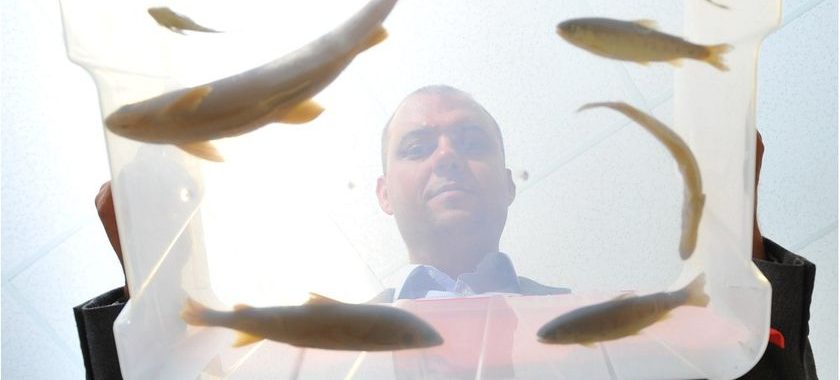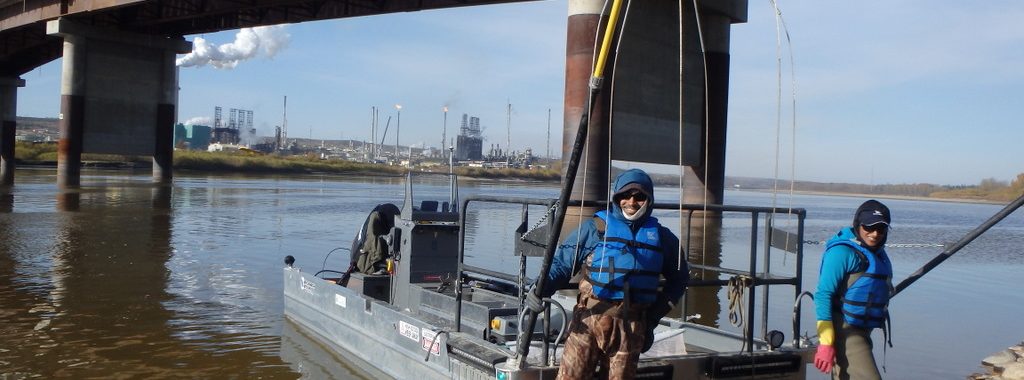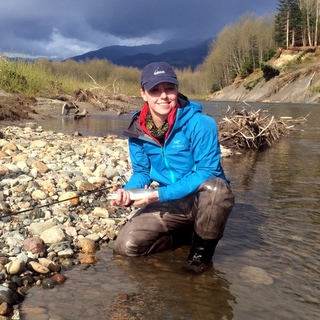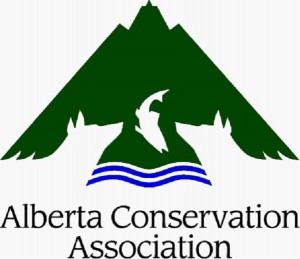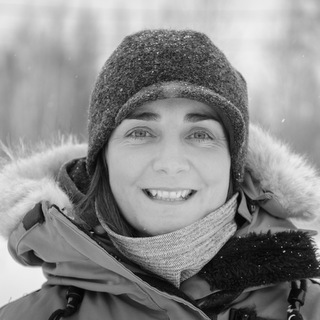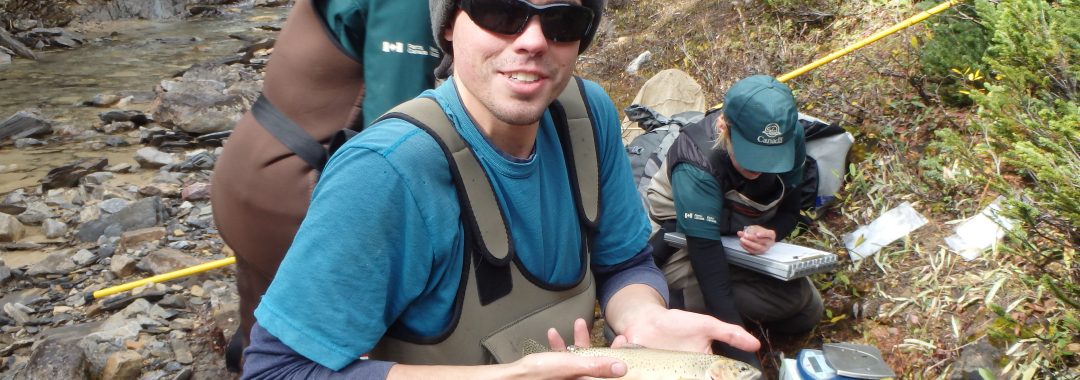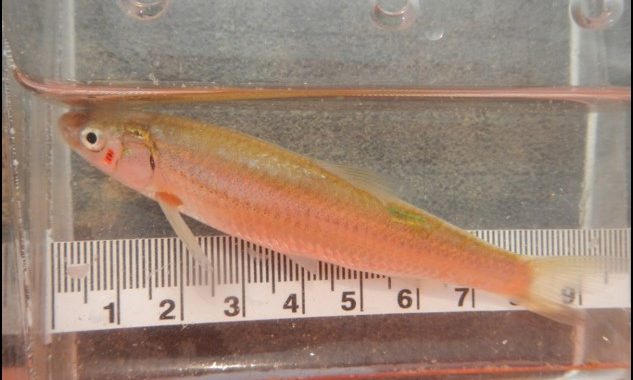Karling Roberts won the prestigious NSERC Alexander Graham Bell Award for her Ph.D. research. Great job Karling!
Author Archive: Poesch, Mark
MSc student Tyana Rudolfsen wins QEII scholarship
MSc. student Tyana Rudolfsen won a prestigious Queen Elizabeth II scholarship.
Alberta Conservation Association funds alpine fisheries research
The Alberta Conservation Association provided a grant to help research the impact of stocking of non-native trout on alpine ecosystems. This project is being led by MSc student Allison Banting with the help of Dr. Mark Taylor and Rolf Vinebrooke. Thanks ACA for your continued support of the PoeschLab.
MSc student Morag McPherson wins Best Poster at Forest Industry Lecture
Morag McPherson (shown above) won Best Poster at Forest Industry Lecture.
Maitland, B. (2015) Stream Crossings in the Western Boreal Forest: Assessing Impacts and Prioritizing Restoration for Native Freshwater Fishes
Thesis Title: Stream Crossings in the Western Boreal Forest: Assessing Impacts and Prioritizing Restoration for Native Freshwater Fishes
Author: Bryan M. Maitland
Abstract
Growing anthropogenic development in response to rising demands for natural resources is a major concern for freshwater fish, particularly in resource rich regions such as Canada’s boreal forest. Expanding networks of industrial resource roads has led to the installation of hundreds of thousands of stream-crossing structures that are becoming increasingly common anthropogenic features on North American riverscapes. These structures can reduce available fish habitat, deteriorate instream habitat, and disrupt ecological connectivity by acting as barriers to fish and aquatic organism movement. My objectives were (i) to determine the extent to which commonly installed stream crossings affect stream fish communities in a boreal forest watershed, and (ii) to assess the application of operational research tools that utilize an optimization framework for mitigating the effects of fragmentation on native freshwater fish and informing restoration planning in the boreal forest. I used mixed-effects modeling and multivariate analyses to determine the effects of stream crossings from 33 culverted, bridged, and reference streams in an industrializing region of the boreal forest in west-central Alberta. Instream habitat characteristics such as mean depth, percent fines, and turbidity showed significant between- as well as within-stream differences among stream crossings. I found that the majority of fish species exhibited significantly lower densities (n·m -2) in upstream habitats as compared to downstream habitats, including a significant reduction in Slimy Sculpin densities in streams with culverts compared to reference streams. Multivariate tests showed that fish assemblages differ as a function of stream type and location. The prioritization method utilized in this study suggests that large gains in potential connectivity could be realized with a moderate investment (~$200K to $500K). I found that the operational research tool can be used to develop cost-benefit curves from the study watersheds, which can be used to minimize overall restoration costs to achieve particular management objectives in watersheds of interest, as well as provide defendable evidence for budget planning to regulators and decision-makers. Additionally, varying model parameters that account for species-specific differences in habitat use (e.g. dispersal distance) affected prioritization solutions, and should be considered in future prioritization analyses. In addition to effecting fish passage and stream connectivity, my results suggest that culverts may also be altering fish habitat, further contributing to large-scale changes in stream fish communities in the boreal forest. Further, my research highlights the efficacy of a novel, easy to use optimization-based barrier prioritization toolset that has minimal data requirements, is applicable to both stream-resident and long-range migratory species, and significantly reduces the mathematical and technical expertise needed to perform relatively complex optimization analyses.
Neufeld, K.*, Blair, S., and Poesch, M.S. (2015) Retention and stress effects of visible implant tags when marking Western Silvery Minnow Hybognathus argyritis and its application to other cyprinids (family Cyprinidae). North American Journal of Fisheries Management 35: 1070-1076.
Abstract:
Visible implant tags are commonly used in fisheries research to mark individuals or batches of fish as part of movement and mark–recapture studies. To be effective, these tags generally need to have high retention rates and little impact on the behavior or physiology of the marked individuals. We tested the retention rates of both visible implant elastomer (VIE) and visible implant alphanumeric (VIA) tags in 80–139-mm Western Silvery Minnow Hybognathus argyritis over a 104-d period. We also measured plasma cortisol and lactate to determine the impact of tagging on stress levels. We found that VIE tags had 100% retention and did not cause a significant increase in plasma cortisol levels, though plasma lactate levels were elevated in VIE treatment groups. Overall, VIE tags were found to be suitable for marking Western Silvery Minnow and similar species. Visible implant alphanumeric tags had 36% retention over 104 d and did not cause significant increases in plasma cortisol, though plasma lactate was elevated in the treatment group with both VIE and VIA tags. Given the high retention rates and low stress effects, VIE tags appear to be more beneficial for use with Western Silvery Minnow and similar-sized cyprinids.
Citation: Neufeld, K.*, Blair, S., and Poesch, M.S. 2015. Retention and stress effects of visible implant tags when marking Western Silvery Minnow Hybognathus argyritis and its application to other cyprinids (family Cyprinidae). North American Journal of Fisheries Management 35: 1070-1076.
Average Western Silvery Minnow (a) plasma cortisol and (b) plasma lactate concentrations for the various tagging treatments (VIE – Visual Implant Elastomer, VIA – Visual Implant Alpha, VIE+VIE – both) for days 1, 54 and 103/104. Error bars represent SD.

Also Read:
*Lab members: Kenton Neufeld, Mark Poesch. Check out opportunities in the lab!


